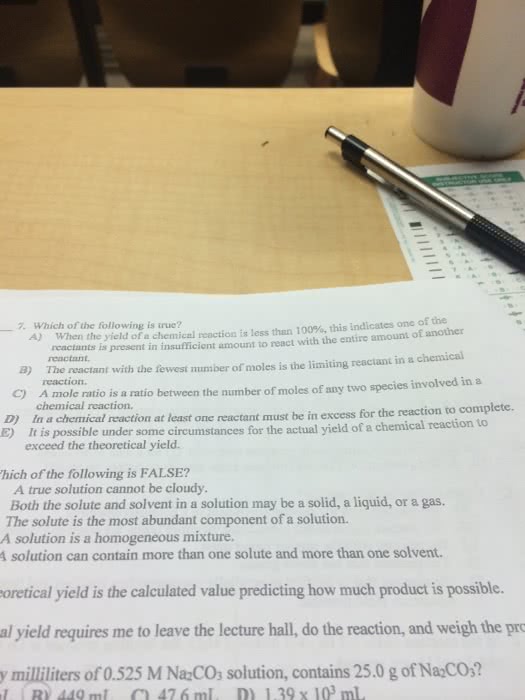CHE 1301 Lecture Notes - Lecture 7: Potassium Bromide, Ammonia, Molar Mass
Document Summary
The limiting reactant will be completely used up in the reaction. It limits the amount of product that can form. The reactant that is not limiting is in excess: some will be left over. The theoretical yield - the amount of a product that can be made in a chemical reaction based on the amount of limiting reactant. The actual yield - the amount of product actually produced: reported from experimental data given in problem, always smaller than the theoretical yield. The percent yield is calculated as follows (actual yield)/(theoretical yield) *100% To dilute, add solution to increase the volume. A solution consists of one or more solutes dissolved in solvent. The concentration of a solution is given by the quantity of solute present in a given quantity of solution. Molarity (m) is often used to express concentration: molarity = moles solute/liters of solution, m= (mol solute)/(l soln) 25. 5g kbr * (1mol kbr)/(119. 00 g kbr) = 0. 21420 mol kbr.



